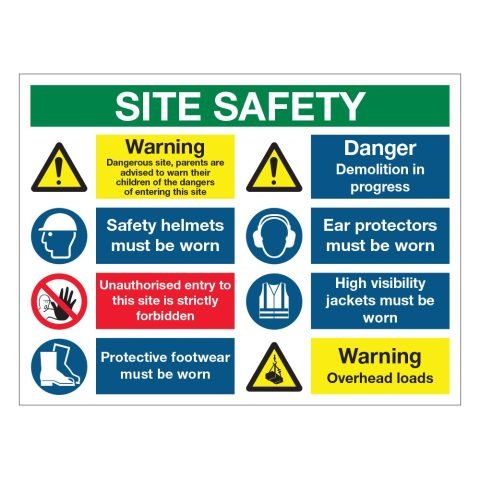Indoor safety signs are visual communication tools placed inside buildings or enclosed spaces to convey important safety messages, warnings, instructions, or regulations to occupants and visitors.
JandN is proud to offer various indoor safety signs.
These signs are designed to be highly visible and easily understood, helping to prevent accidents, injuries, and other safety hazards within indoor environments.
What are different kinds of Indoor safety Signs?
Here are some common types of indoor safety signs and their uses:
- Exit Signs: These signs indicate the location of emergency exits and escape routes in case of fire or other emergencies. They are often illuminated and placed above doors or along evacuation routes to guide occupants to safety.
- Fire Safety Signs: Fire safety signs include fire extinguisher signs, fire alarm signs, and fire action plan signs. They provide information on the location of fire safety equipment, alarm pull stations, and emergency procedures to follow in the event of a fire.
- Hazard Signs: Hazard signs warn occupants of potential dangers or hazards present in the area. They may include signs for electrical hazards, chemical hazards, slippery floors, or falling objects, among others.
- Safety Equipment Signs: These signs indicate the location of safety equipment such as first aid kits, eye wash stations, emergency showers, and personal protective equipment (PPE) storage areas. They help occupants quickly locate essential safety resources in case of an emergency.
- Prohibition Signs: Prohibition signs indicate actions or behaviors that are not allowed within a specific area to prevent accidents or injuries. Examples include “No Smoking,” “No Entry,” or “Do Not Touch.”
- Mandatory Signs: Mandatory signs indicate actions or behaviors that are required or mandatory within a specific area. Examples include “Wear Personal Protective Equipment (PPE),” “Keep Closed,” or “Wash Hands.”
- Informational Signs: Informational signs provide general information or instructions relevant to safety within the building. They may include signs for emergency contact numbers, safety policies, or evacuation procedures.
Indoor safety signs play a crucial role in promoting a safe and healthy indoor environment by effectively communicating important safety information to occupants and visitors. They help raise awareness, mitigate risks, and ensure compliance with safety regulations and procedures.
Uses of Indoor Safety Signs:
Indoor safety signs are crucial for maintaining safety and ensuring proper guidance within buildings and enclosed spaces. Here are some common uses:
– Emergency exit indicators: Signs mark the locations of exits, fire escapes, and emergency exits to ensure safe evacuation during an emergency.
– Fire safety instructions: They highlight fire extinguishers, fire alarms, and emergency protocols to guide individuals during a fire.
– Restricted areas: Signs help prevent unauthorized access to areas like electrical rooms, laboratories, or storage spaces with hazardous materials.
– Health and hygiene reminders: Signs promote hygiene practices like handwashing or the proper use of personal protective equipment (PPE), especially in healthcare or food service settings.
– Caution and hazard warnings: Indoor signs warn of potential hazards such as wet floors, areas under maintenance, or low ceilings to prevent accidents.
– Equipment and machinery safety: They provide instructions on the safe use of machinery, alerting people to risks or necessary precautions.
Overall, indoor safety signs enhance awareness, reduce accidents, and promote a secure environment for both employees and visitors.






There are no reviews yet.